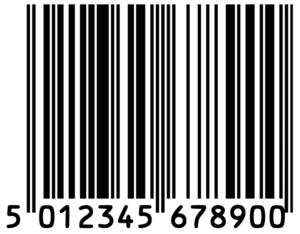Understanding GTIN product codes
EDI, News
Apr 27, 2023

GTIN, EAN and IAN – what is what?
 The Global Trade Item Number (GTIN) is a unique identifier for trade items, developed by the international organization GS1. GTIN helps to identify a specific retail product, in a specific packaging configuration, from a specific manufacturer. The Global Trade Item Number (GTIN) has many names, you might also come across International Article Number (IAN) and European Article Number (EAN).
The Global Trade Item Number (GTIN) is a unique identifier for trade items, developed by the international organization GS1. GTIN helps to identify a specific retail product, in a specific packaging configuration, from a specific manufacturer. The Global Trade Item Number (GTIN) has many names, you might also come across International Article Number (IAN) and European Article Number (EAN).
GTINs are presentable in barcode format, which improve the efficiency, safety, speed and transparency of supply chains across physical and digital channels. Barcodes are used worldwide for lookup at retail point of sale, but can and should also be used as codes in EDI documents to make sure that trade parties understand exactly which product is being ordered or invoiced.
Key features of the GTIN
- Global: GTINs are used on all continents.
- Multi-sector: GTINs can be used by all business sectors, enabling the identification of any product (e.g. healthcare, grocery or any other retail product) using the same standardized code.
- Unique: The standardized structure and rules for assigning GTINs assure that every GTIN is globally unique.
- Data integrity: Inclusion of the check digit supports integrity of the GTIN structure.
- Packaging hierarchy: GTIN-14 can be used to identify trade items’ packaging levels.
Where do you get barcodes/GTINs for products?
In our article Best Practice in Product Codes, we explained that using GTINs is best practice in supply chain automation and EDI. Furthermore, many retailers require suppliers to have GS1 compliant GTINs. Working with registered product codes you can rest assured that your barcodes and product codes will be accepted by major retailers and distributors all over the world.
You can get GTIN’s from your local GS1 office. In Baltic states, these are:
GTIN family
For GTINs there are 4 allowed formats:
- GTIN-13 (EAN/UCC-13): this is a 13-digit number used predominantly in Europe and European marketplaces
- GTIN-14 (EAN/UCC-14 or ITF-14): this is a 14-digit number used to identify trade items at various packaging levels
- GTIN-12 (UPC-A): this is a 12-digit number used in North America
- GTIN-8 (EAN/UCC-8): this is an 8-digit number used to identify products with small dimensions
What do the numbers mean in GTIN(EAN)-13?
- GS1 prefix – the first 3 digits identify the GS1 Member Organization which the manufacturer has joined (not necessarily where the product is actually made).
- GCP or the manufacturer code is a unique code assigned to each manufacturer by the numbering authority. All products produced by a given company will use the same manufacturer code.
- The item reference or product code is assigned by the manufacturer. The product code immediately follows the manufacturer code. The total length of manufacturer code plus product code should be 9 or 10 digits depending on the length of the country code (2-3 digits).
- The check digit is an additional digit used to verify that a barcode has been scanned correctly. It is computed modulo 10, where the weights in the checksum calculation alternate 3 and 1.

GTIN-14 allows various packaging levels
GTIN-14 is even better than GTIN-13 as it specifies not only the product, but also its packaging level – is it consumer unit, multi-pack, case, or pallet. This allows trading partners to order the specific product they need and to consistently retrieve correct information.
The following diagrams illustrate the assignment of GTINs at various item and packaging levels. The use of different Indicator Digits or different Item References at the higher levels of packaging ensure groupings of products are identified distinctly from the products contained within each grouping.

The move from 1D product codes to 2D product codes
While some businesses have yet to start using standardized GTIN codes, another big change is about to happen in retail industry: the adoption of 2D barcodes. 2D barcodes, like QR codes can include more data than the current GTIN linear barcode. This additional data is, for example, expiry date, lot number or serial number and internet links to ingredients and allergen information, product pictures and videos, consumer reviews, etc. Take a peek into the future with GS1’s 2D Barcodes at Retail Point-of-Sales guide.
Business benefits of using GTIN
GTIN is established as the worldwide standard for trade items. GTINs facilitate the communication of accurate product information among trading partners to support supply chain operations and optimize business intelligence. Simply put, using GTINs streamlines supply chain management and promotes accuracy, speed, and efficiency for your business. US GS1 has listed the benefits of using GTIN:
- Drives e-commerce: GTIN facilitates the global flow of trade items and associated information used in e-commerce.
- Enhances compatibility: GTIN builds confidence across all business sectors to trade goods and services with compatible product identification.
- Facilitates accuracy: Capturing the GTIN at warehouse shipping and receiving, hospital, POS, etc. is essential for accurate stock control and order replenishment.
- Simplified supply chain management: GTIN strengthens business communications among supply chain partners by accurately identifying specific products and the flow of associated information.
- Improved data quality: GTIN improves information quality by ensuring that product information is identical among supply chain partners. This benefits both internal and external business processes.
Use GTINs in all your EDI trade documents to minimize problems and maximize efficiency!
Contact us if you have any questions.

